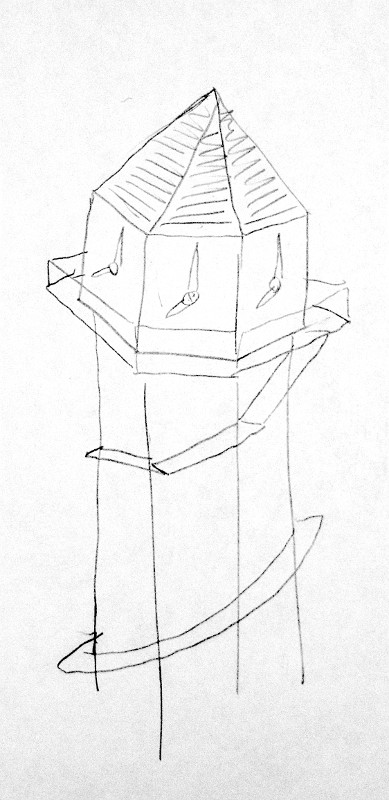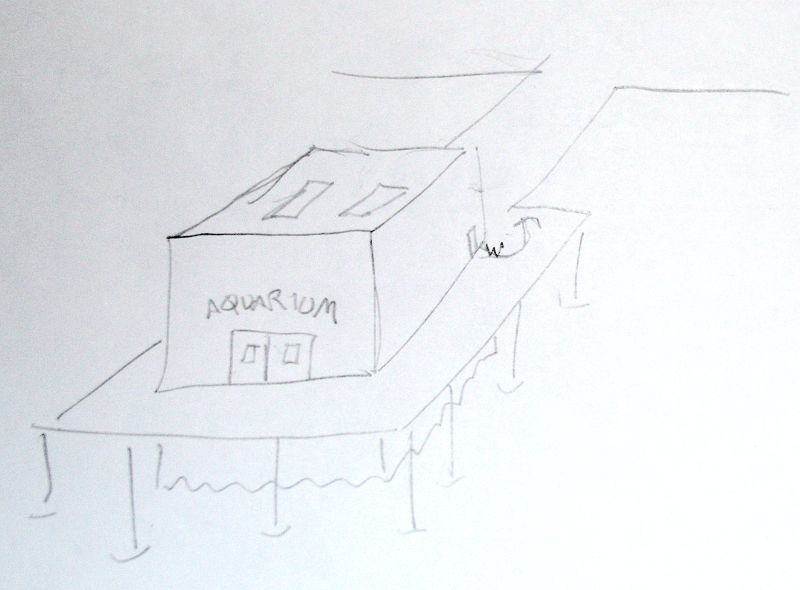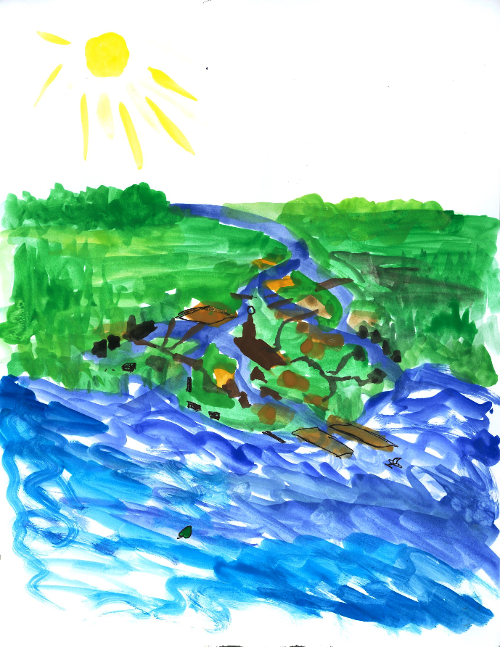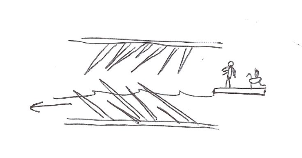← Session 16 | Campaign Summary | Session 18 →
Last time, our heroes traveled to a ghost town and were trapped in an attic by actual ghosts! On the top floor of a forge/mint, Lucia found an entrance to a secret room, but was paralyzed by a trap. Gleador pushed her inside and guarded the door with his flaming body, since the Spectres fear fire. He looks around for a way out of this mess. There are chimneys from the forge in the center of the building that exit through the roof. The windows in the exterior walls are slits, because the building is fortified against attack from outside. Not an easy place to escape from.
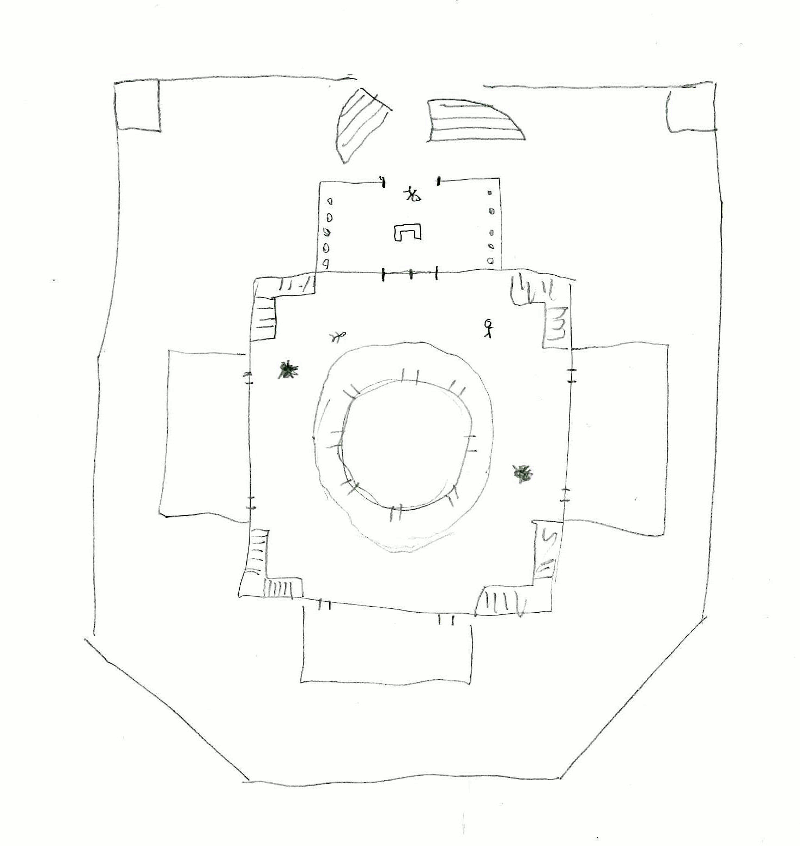
Gleador tries a bold tactic: friendship! He asks if he can help the Spectres build something. They are surprised and delighted. Most living people who come to this building want to steal, not help. The Spectres can drag objects around like poltergeists, but can’t operate precision machinery like they did in life. While the paralysis poison works its way out of Lucia’s system, the Spectres pantomime instructions to Gleador: how to restart a forge, melt some metal, and cast some silverware.
When Lucia is back in action, she casts Speak With Dead on one of the now-friendly Spectres and asks three questions:
- What do you know about money from Saarland showing up elsewhere? As far as the Spectre knows, Saarland coins are still accepted in other towns. Recently, coins are carried off by thieves. Sometimes, coins go missing even when the Spectres don’t detect any living intruders.
- Is there anything magical about the coins or other items? The Spectre gestures to a weapon rack and says that the magical weapons on it are magical, but coins are not.
- What have you learned about the attack, how to prevent another? Fiercely defending the forge from all intruders has prevented another attack so far, so the Spectres will keep doing that. One slain enemy came back as a Spectre, but the Saarland Spectres drove it away.
Gleador asks permission to examine the storeroom that Lucia hid in one more time, offering to conceal the entrance once more. It’s a storeroom. It contains many items that our heroes won’t steal, and has no exits besides the one door.
Lucia and Gleador leave the forge and Gleador transforms into a Chinese flying dragon with eagle eyes. Lucia rides him and they circle Saarland to look for interesting things. One side of the ruined town is controlled by Ents, the other by Spectres. Rose, a Halfling they met a few days ago, enters Saarland on the Spectre side. She sees the dragon flying above and hides from it. Gleador wants to pursue her, but Lucia’s not feeling so well. Gleador drops her off outside the city. She casts Sanctuary around herself and communes.
Gleador turns into a bee with poison frog contact venom, and the toughness of a rock. A reconnaissance form that can’t be instas-killed by a flyswatter. He flies back into the town and finds Rose entering a Spectre-filled house. The Spectres don’t react to her, which is weird since they usually attack anything living. Gleador flies in to watch her and the Spectres attack him. They seem out to get anything living! Rose sees the commotion, but figures Gleador is a normal bug and moves on. She finds a silver serving dish and puts it in one of her sacks. Gleador retreats from the Spectres but gets hit again. He’s almost dead! He keeps his distance and watches Rose go from house to house, looting them while undisturbed by their Spectre occupants. After an hour he flies dow nad stings her with paralyzing venom. She slumps against a gate and won’t be able to move for a while.
Gleador flies away to retrieve Lucia and get healed. He comes back as a dragon, carrying Lucia. As they approach, an Ent has noticed Rose and is moving in to menace her. Lucia dismounts and charges the Ent, which knocks her across the street with a powerful branch. Gleador starts a fire with his dragon breath and blows a smoke ring at the Ent to let it know how dangerous he is. The Ent retreats to get fire-fighting equipment. Lucia pulls Rose onto Gleador and the three of them fly off.
Lucia’s quest gives her an unfailing sense of direction to Saarland, but not to anywhere else. Now that they want to leave Saarland, how will they find their way back to Sugar’s Crossing? They know they went north-east to reach Saarland, so they head south until they find the road from Fairmeadow to Sugar’s Crossing, then take that west. As they fly they question Rose, whom they have once again incapacitated. They take her amulet and ask where she got it. She found it on the body of a looter who wandered into Ent territory. It makes the wearer appear to be undead, which placates Spectres, but not Ents. She started looting Saarland about 8 months ago. She got a tip from another adventurer that le Grind was paying well for artifacts from Saarland. She doesn’t care what he does with them. She had steady work that wasn’t too risky and paid well. Of course, they’ve taken her only defense, so no the job is much riskier. They set her down in the woods once the paralysis wears off. She’s happy to be rid of them and can find her own way back.
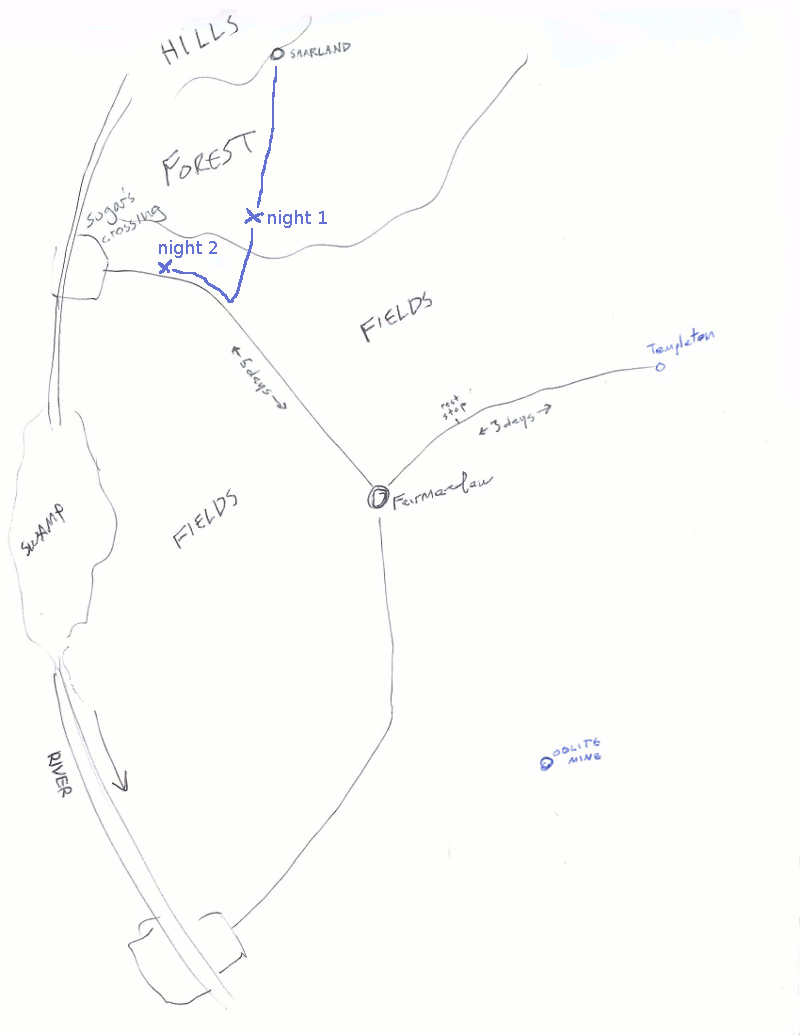
The trip back to Sugar’s Crossing takes several days, even though Gleador flies quite fast. They aren’t taking a direct route. The first night they camp in the woods. On the second day they hit the road and turn west. They camp along the road on the second night. While our heroes sit around the campfire, an Elk approaches. Gleador recognizes this animal as a fellow Druid. The Elk walks its back legs forward under its forelegs, which push out to the side as the Elk takes humanoid form. Yasha, a 6-foot-plus grey-haired Orc woman formally greets Gleador as a fellow Druid. Gleador returns the traditional wave, bow, and vocalization and introduces himself. Yasha has heard of him, and his exile from the Sapphire Islands. The Druid leaders deep in the forest to the north, aren’t happy with Gleador.
Yasha is a sentry for Sugar’s Crossing. Instead of waiting for people to get to edge of town, then discover if they are troublemakers, Yasha watches travellers as they take the road past the forest, and intercepts undesirables far from town. Our heroes ask if she knows Rose. Yasha has seen her coming and going. It’s odd that she goes into the woods instead of staying on the road, but she’s not violent and doesn’t get in trouble, so Yasha lets her go. They ask about Oolite, the family that supposedly built the living statue that has given them so much trouble, but Yasha doesn’t know anything about them. Finally, Gleador says he’s ready to do pennace and be re-instated in the Druid community. Yasha thinks that’s a good idea. There’s a messenger Druid named Hughes who can carry that message from Gleador to the higher-ups. He comes and goes, so there’s no specific time to expect him, but Yasha will tell him to look for Gleador.

